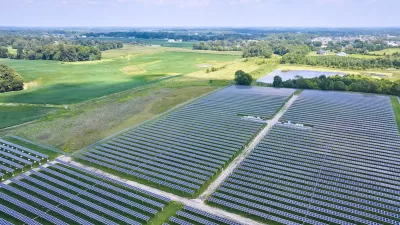The world's largest solar PV conference was held September 21-25, 2009 in Hamburg, Germany. I had a chance to attend and used the event as an opportunity to understand the key players, learn about new technology, latest trends and assess the current state of the industry. Here are a few impressions of what I heard and saw:
1. The solar PV industry appears quite mature and poised to launch in dramatic fashion once global capital markets rebound and cash becomes available. Japan, Germany and the US remain the technology leaders. But now, there is overcapacity. So the goal is to maintain margins as prices get cut based on competition.
2. Solar PV manufacturers are being cautious about expansion and instead are focused on building market share. They are strategically looking for new opportunities in the 50-100 MW range.
3. The United States is considered a huge potential market for solar PV, but government policies are inconsistent and do not appear to support rapid growth. European manufacturers are quite interested in the DOE loan guarantee programs.
4. India will announce its National Solar Plan in November – 20 GW domestic need by Y2020. This should cause ripples through the solar PV Industry. To achieve this, 5MW would need to be produced every day until the deadline. Although, the perception is that conducting business in India is still confusing and difficult.
5. To offset this concern and meet the pressing demand, a special ‘solar economic zone' where a public – private partnership offers a business park setting, shared resources, tax and trade credits, green jobs, training and no government interference throughout the entire value chain - was proposed by India.
6. China appears to be successful in getting established as solar PV manufacturing force and has been gaining market share. They don't appear to be adding any new, meaningful technology. Instead, they are concentrating on completing the value chain, improving quality, building sales channels through mass production and lowering costs by selling modules at a discount to throughout the US, Europe and Japan.
7. Governments trying to lure solar PV business into their regions have plenty to choose from as new competition enters the industry. As a result, third-party industry experts are now being asked to make independent evaluations on business plans to determine which companies will get government incentives.
8. Japanese solar PV manufacturers are starting to set up capabilities in the United States in order to preserve their intellectual property rights. They preferred the US patent system.
9. Oregon established the first statewide feed-in tariff in the US for solar PV. This state is also preferred because it has large, natural deposits of silicon ingots - the raw material used to produce solar cells, along with an educated, green collar workforce.
10. Grid parity is still considered a nearly a decade away. But when it occurs, the solar PV industry is considered boundless in terms of financial potential, thus the continued investments to reach this milestone.
11. Spain, once the envy of the world because of their commitment to solar PV applications of all types, has been hampered since the government no longer provides wide ranging subsidies.
12. Solar PV farms, consisting of different applications including condensers, modules and reflective mirrors are the most ubiquitous large-scale applications. In populated areas and small countries, they take up a large amount of land, require constant maintenance and have poor visual quality.
13. Still, solar PV makes the most sense to alleviate ‘brown outs' in many parts of the world where the demand for electricity is highest during the day and correlates to when the sun is shining.
14. Solar PV manufacturers are beginning to include vertical integration into their business models such as developing utility size power plants to capitalize on their output as they predict the future of the energy market and how power will be distributed.
15. The biggest technology drawback to solar PV is that the power produced must be used right away. It cannot be stored efficiently and affordably.
16. No significant new solar PV innovations at the exhibition were highlighted that have been field-tested and proven. Rather a maturation of existing technologies was the norm.
17. Low cost, thin film flexible solar cells (CIGS) caught my attention. They are durable, lightweight and require no glass. Cell strips can be glued onto existing house roof tiles and boat decks. When accompanied by a portable solar charger they can be applied to camping tents, backpacks and clothing.
18. Uncertainty of the market has made leading solar PV companies unwilling to share lessons learned and competitive data with the industry.

Alabama: Trump Terminates Settlements for Black Communities Harmed By Raw Sewage
Trump deemed the landmark civil rights agreement “illegal DEI and environmental justice policy.”

Study: Maui’s Plan to Convert Vacation Rentals to Long-Term Housing Could Cause Nearly $1 Billion Economic Loss
The plan would reduce visitor accommodation by 25% resulting in 1,900 jobs lost.

Planetizen Federal Action Tracker
A weekly monitor of how Trump’s orders and actions are impacting planners and planning in America.

Wind Energy on the Rise Despite Federal Policy Reversal
The Trump administration is revoking federal support for renewable energy, but demand for new projects continues unabated.

Passengers Flock to Caltrain After Electrification
The new electric trains are running faster and more reliably, leading to strong ridership growth on the Bay Area rail system.

Texas Churches Rally Behind ‘Yes in God’s Back Yard’ Legislation
Religious leaders want the state to reduce zoning regulations to streamline leasing church-owned land to housing developers.
Urban Design for Planners 1: Software Tools
This six-course series explores essential urban design concepts using open source software and equips planners with the tools they need to participate fully in the urban design process.
Planning for Universal Design
Learn the tools for implementing Universal Design in planning regulations.
Caltrans
Smith Gee Studio
Institute for Housing and Urban Development Studies (IHS)
City of Grandview
Harvard GSD Executive Education
Toledo-Lucas County Plan Commissions
Salt Lake City
NYU Wagner Graduate School of Public Service





























